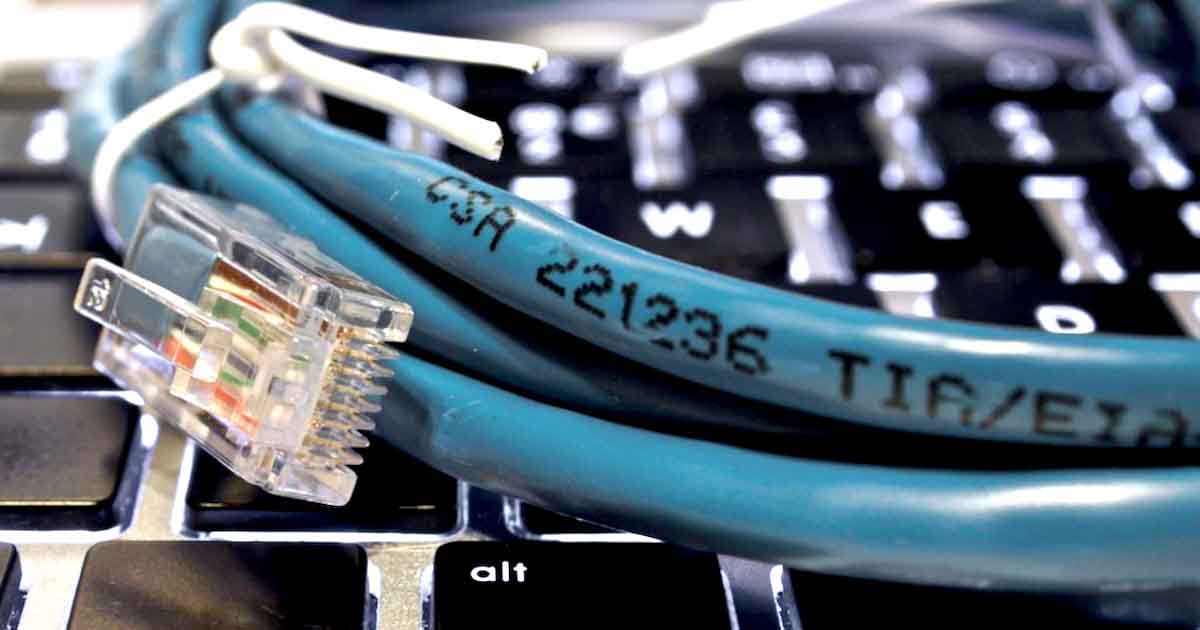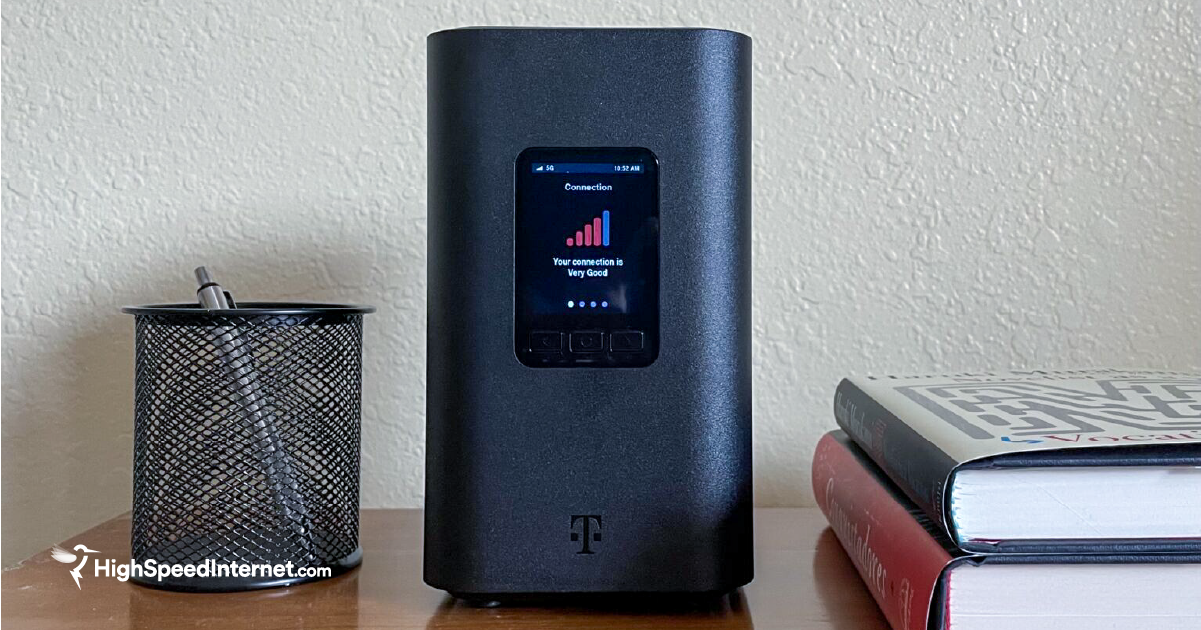What Is a Modem and Why You Need One to Get Internet
Find out what brings your internet connection into your home or building
Sep 12, 2025 | Share
Equipment Guides, FAQ, Home Networking
A modem is a device that sits between your home network and your internet provider. You can’t access the internet without one because your devices and your provider’s network use different delivery methods to send and receive data.
If that explanation is good enough for you, then be sure to read about how a router builds your home network and connects to the modem. But if you’re just itchin’ for the gritty details on how a modem brings internet to your home or building, read on for more.
Are you facing issues with your current modem?
Your problem may be a slow internet connection. Use our guide on how to speed up your internet, or enter your zip code below to find a plan with better speeds in your area.
In this explainer:
What is a modem? | Why do you need a modem? | Does a modem require a router? | What else does a modem do? | Should you rent or buy a modem? | FAQ | How does a modem work? | Glossary
In this explainer:
What is a modem?
A modem is a device that sits between two networks—your local area network (LAN) and your internet provider’s network. It serves as your local shipping and receiving station.
So what does it do, exactly? We get into the nitty-gritty of it all if you want the hard technical details. But if we use the sending and receiving station analogy, the modem receives luggage from a delivery truck that crosses a long bridge between the modem and your provider. It then repackages your luggage and sends it along a superfast subway connected to your home network’s Grand Central Station—the router.
“Modem” is an acronym
The term “modem” is short for Modulator and Demodulator, which is what a modem does. On a more technical level, modulation changes the properties of an analog radio frequency (RF) carrier wave to match the digital signals a modem receives through Ethernet. Demodulation works in reverse—it converts the RF carrier wave received from your internet provider into digital signals your home network can use.
If your eyes just glossed over, we get it. Just remember you can’t access cable, DSL, or satellite internet without a modem or gateway (a router/modem combo).

What about fiber internet?
The term “modem” primarily applies to cable, digital subscriber line (DSL), and satellite modems. Fiber uses a completely different device called an optical network terminal (ONT), which deciphers light signals like Morse code instead of converting radio waves.
Why do you need a modem?
You need a modem to send and receive data from two different networking roads: your internet provider’s connection and your home network’s connection.
Here’s the deal: internet data is already formatted for home network use on your ISP’s end, but generally, there are no Ethernet cables between you and your internet provider. So providers use several other wired and wireless mediums to transfer data, like coax cables, telephone lines, and satellite communications. Fiber is also Ethernet-ready, but it uses lines with glass fibers instead of copper wires, requiring the use of an ONT.
It’s all one big networking mess if you think about it. The internet backbone is all fiber, and your internet provider’s core network is probably fiber, too. The differences generally come from the last-mile connection to your home.
Regardless, translation is needed to get Ethernet-ready data across these various road types. Cable and DSL internet use RF carrier waves to send and receive data across copper wires. In both cases, providers modify the amplitude and phase of a radio wave to match the ones and zeros of a data wave. The modem receives the carrier wave and translates the modified shape into ones and zeroes.
Fiber internet also uses modulation and demodulation, but it utilizes laser or LED pulses instead of radio waves. For instance, a single pulse translates into a “one,” and no pulse equates to a “zero”—the two basic units of data. Moreover, these light pulses can reach 60 miles before they begin to degrade.
Ethernet uses a similar pulse method, but it relies on electrical pulses (signals) rather than light to send data between two points. This pulse method is one of the reasons fiber is better than cable, DSL, and satellite: It doesn’t use modified radio waves to transmit data, just a Morse code-like deciphering of pulses.
That all said, a modem sends the extracted data through an Ethernet cable that’s received by the router. In turn, the router sends the data through other Ethernet connections as electrical impulses. For Wi-Fi, the router performs its own modulation and demodulation.
Does a modem require a router?
A modem doesn’t require a router. Technically, it just needs an internet connection and an Ethernet connection to a device—that could be a router, computer, game console, or some other Ethernet-ready device.
In contrast, a router absolutely needs a modem, as it can’t understand the internet without its translator. A router is more like an airport with a built-in subway station. It receives a package through the modem’s subway connection and reroutes that package through another subway line to your wired device. If the destination is wireless, the router repackages the data and sends it on an airplane.
However, a router can function as a network manager without the modem. Check out our explanation about how a router works for more information.

Ready to ditch your provider’s outdated router?
We suggest connecting one of the best Wi-Fi routers for network management and masking your IP addresses. If you have a gigabit or faster connection, we list four of the best and fastest gigabit Wi-Fi routers you can get.
What else does a modem do?
The typical standalone modem only translates. But a wireless gateway combines a modem with a router, so it’s both a translator and a network manager.
Should you rent or buy a modem?
We provide a separate guide listing the reasons why you should buy a modem or rent one from your internet provider. But in a nutshell, rent a modem if you want free upgrades and technical support. Buy a modem if you want full control over your home network, access features your provider’s modem doesn’t offer, or long-term savings.
If you rent a modem or gateway from your internet provider, the rental fee appears on your bill each month. Here are a few examples of ISP equipment rental fees:
| Provider | Monthly fee | Annual fee |
|---|---|---|
| Astound | Up to $18.00/mo. | Up to $216.00/yr. |
| Cox | $10.99/mo. | $131.88/yr. |
| Xtream | $12.00/mo. | $144.00/yr. |
| Optimum | $10.00/mo. | $120.00/yr. |
| WOW! Internet | $14.00/mo. | $168.00/yr. |
| Xfinity | $14.00/mo. | $168.00/yr. |
If you’re eager to buy a modem or gateway, here are a few suggestions:
How does a modem work—the technical explanation
In short, a modem receives a signal from your internet provider’s connection and extracts data from that signal. The modem then sends the data through its Ethernet port as electrical pulses.
Technically, fiber doesn’t use a modem but instead relies on an ONT that interprets light signals as ones and zeroes. But we included it here anyway because it still translates an internet signal into data your devices can use.
If you really want to know the technical details of how a modem works, you’ve come to the right section. We divide the explanation into four parts and give you the step-by-step process each device uses to retrieve data from your internet provider and send it to your devices.
Find out more:
How a cable modem works | How a DSL modem works | How a fiber ONT works | How a satellite modem works
How a cable modem works
Here’s a short list of what happens after your provider’s signal enters your home:
Step 1: The modem’s tuner receives your internet provider’s modulated analog signal from the coaxial cable and moves it to the demodulator.
Step 2: The demodulator uses quadrature amplitude modulation (QAM) to split the analog signal into two separate carrier waves.
Step 3: The demodulator uses an analog-to-digital converter (ADC) to revert the two carrier waves into two separate bitstreams.
Step 4: The demodulator uses an error correction module to check that the conversion is correct and sends the data to the processor.
Step 5: The media access control (MAC) and processor separate network data from digital TV data, if needed.
Step 6: The modem’s PHY transceiver uses Manchester encoding to convert the bitstreams into electrical pulses.
Step 7: The modem transmits these pulses over an Ethernet cable by applying specific voltages to four of the eight copper wires.
When you reverse the steps, the modem eventually delivers a modified carrier wave to your provider’s CMTS. In turn, the CMTS demodulates and routes your data to the fiber-based internet. Fiber uses LED and laser pulses to send data, not carrier waves.

Cable internet uses abandoned TV channels
The internet provider’s cable modem termination system (CMTS) delivers downstream signals to the modem through unused 6 MHz cable TV channels. It receives upstream signals from the modem through unused 2 MHz cable TV channels.
How a DSL modem works
DSL modems typically plug into a filter that separates voice from data. Here’s a short list of what happens:
Step 1: Your provider’s DSL access multiplexer (DSLAM) splits the telephone line’s usable data bandwidth into 247 separate channels, each 4 kHz wide and containing an analog carrier signal.
Step 2: The DSLAM receives input data streams and uses quadrature amplitude modulation (QAM) to modulate separate carrier waves that are delivered through the clearest channels.
Step 3: The subscriber’s low-pass filter receives and separates the DSL frequencies (8 kHz to 1 MHz) from the voice frequencies (if needed).
Step 4: The filter passes the DSL signals to the modem (or transceiver).
Step 5: The modem’s RJ11 socket receives the modulated DSL signals and passes them on to the demodulator.
Step 6: The demodulator uses quadrature amplitude modulation and an analog-to-digital converter (ADC) to revert the modulated carrier waves into two separate bitstreams.
Step 7: The media access control and PHY transceiver uses Manchester encoding to convert the bitstream into electrical pulses.
Step 8: The modem transmits these pulses over an Ethernet cable by applying specific voltages to the copper wires.
How an optical network terminal (ONT) works
Fiber internet to the home does not use the traditional modem but instead relies on a termination point and an optical network terminal. Here’s how an ONT works:
Step 1: The ONT receives LED or laser pulses through its fiber-optic connection to the terminal point.
Step 2: The media access control and processor separate the bitstream from all other data.
Step 3: The PHY transceiver uses Manchester encoding to convert the bitstream into electrical pulses.
Step 4: The ONT transmits these pulses over an Ethernet cable by applying specific voltages to the copper wires. To transmit data back to the internet provider, the ONT turns the diode on and off, signaling ones and zeroes.
Keep in mind that ONT devices primarily reside in fiber-to-the-home setups. Other fiber internet installations—like fiber-to-the-curb—rely on copper cabling to fill the “last mile.” Hence, the cable or DSL modem scenario applies up until the street cabinet housing the area’s optical network unit or the passive optical network’s (PON) optical line terminal (OLT).
How a satellite modem works
Depending on the installation, a satellite modem connects to your satellite dish using one or two coaxial cables. Here’s what happens when the modem receives data from a satellite dish:
Step 1: The low-noise block downconverter (LNB) on your satellite dish sends the signal across a coaxial cable to your modem.
Step 2: The analog tract inside the modem converts all received signals to an intermediate frequency (IF) signal for use by the demodulator. It then passes the signal through an anti-aliasing filter (AAF) and is sampled.
Step 3: The demodulator separates the digital signal from the analog IF-based analog carrier wave.
Step 4: The analog-to-digital converter reverts the digital wave into a bitstream.
Step 5: The forward error correction (FEC) decoder removes artificial redundancy from the bitstream. This redundancy helped reduce errors during the transmission.
Step 6: The differential encoder removes the modulation that prevented the ones and zeroes from swapping places during transmission.
Step 7: The descrambler puts all the ones and zeroes back into a logical order. Scrambling data optimizes energy dispersal only.
Step 8: The demultiplexer splits one multiplexed bitstream into multiple streams if needed.
Step 9: The media access control and PHY transceiver uses Manchester encoding to convert the bitstream(s) into electrical impulses.
Step 10: The modem transmits these impulses over an Ethernet cable by applying specific voltages to the copper wires. The transmitter portion of a satellite modem works in reverse.
Some satellite modems do not have a modulator. Instead, they rely on a DSL connection or the local public switched telephone network (PSTN) to upload data.
Our top modem recommendations for cable internet
Now that you know what a modem is and how it works, you can find one that best fits your needs.
Overall, the Motorola MB6811 is a solid choice for the average household, but check out the best cable modems if you want to scope out more cable modem recommendations.
Want lots of speed? Check out the best modems for gigabit internet to ensure you’re getting the most out of your cable internet service.
Finally, if you’re on a budget or want to simplify your home network, take a look at the best modem router combos.
FAQ about modems
What is Data Over Cable Service Interface Specification (DOCSIS)?
What is a data channel?
Can you use any modem with your internet connection?
Glossary
Cable modem termination system (CMTS)
A CMTS serves as the middleman between the internet and the customer’s modem. It handles multiple modems simultaneously and is responsible for assigning public IP addresses to any device connected to the modem’s Ethernet port.
On the network side, the CMTS includes Ethernet ports that connect to the provider’s routers. On the client-facing side, the CMTS uses RF connectors to send modulated carrier waves through fiber lines and coax cables. These waves are distributed across the service area’s network until it reaches the client’s modem.
Digital subscriber line access multiplexer (DSLAM)
A DSLAM sits between all DSL modems in a service area and the internet provider’s network. It converts upstream electrical signals into bitstreams and merges them all together into a single connection—downstream is the reverse of the process. DSLAM units typically reside at distribution points or local telephone operators.
Intermediate frequency
Intermediate frequencies sit between a baseband frequency and a carrier frequency. These frequencies allow the modem to support various satellite internet providers without the need for hardware that supports every possible carrier frequency.
Manchester Signal Encoding
This format defines how binary ones and zeros are represented in an electrical form.6 The device driver creates a unit of data (frame) which is then converted into an electrical signal by the networking circuitry using this format.
Media access control (MAC)
MAC handles how data moves between two points on a network. It assigns an address to each device so they can communicate with each other. It also controls the hardware responsible for communication on a network, whether it’s wired, wireless, or optical.
Optical network unit (ONU)
While an optical network terminal (ONT) serves as the end-user’s “modem” within the home or office, the optical network unit resides outside on a utility pole or in a standalone cabinet. It’s connected directly to the PON (see below) and converts light pulses into electrical signals. It’s used in fiber-to-the-curb services and typically connects to a splitter that feeds internet connectivity through a coaxial or telephone cable to multiple homes and businesses.
Optical line terminal (OLT)
An optical line terminal is a device located in the central office (or headend) and serves as the starting point in a PON (see below). It formats data received from the provider’s core network to match the framing and wavelengths used in the connected PON. It also combines all the data received from the ONTs connected to the PON and sends it along the provider’s core network.
Passive optical network (PON)
Passive optical network is the term used to describe a point-to-multipoint fiber network design. It starts at the provider’s central office and usually consists of an OLT, a feeder cable, distribution cables, optical splitters, drop cables, a distribution hub, and ONTs. The design is passive because the optical lines and spitters do not require power, whereas cable internet requires electricity and powered amplifiers to transmit data over coax lines.
Quadrature amplitude modulation (QAM)
QAM (pronounced as kwam) is the most common way to translate a stream of data into an RF carrier wave.
As we know, data is nothing more than ones and zeroes (bits). A modem’s modulator receives two data streams and groups the bits of each stream into symbols. The larger the symbol, the more data that’s transmitted in any given second. Take a look:
| Bits per symbol | # of different symbols | |
| 8-QAM | 3 | 8 |
| 16-QAM | 4 | 16 |
| 64-QAM | 6 | 64 |
| 256-QAM | 8 | 256 |
| 1024-QAM | 10 | 1024 |
| 4096-QAM | 12 | 4096 |
A modulator also receives two high-frequency RF carrier signals (which are just a flow of constant frequency). The modulator changes the amplitude (power) and phase (position) of both carrier waves to match the symbols created from each stream. They’re combined into one output signal and transmitted wired or wirelessly.
Most cable modems use 64-QAM and 256-QAM.
Physical layer (PHY)
The physical layer is the first (and bottom) layer in the Open Systems Interconnection (OSI) model for computer networking, and it deals with physical connections.
Author - Kevin Parrish
Kevin Parrish has more than a decade of experience working as a writer, editor, and product tester. He began writing about computer hardware and soon branched out to other devices and services such as networking equipment, phones and tablets, game consoles, and other internet-connected devices. His work has appeared in Tom’s Hardware, Tom's Guide, Maximum PC, Digital Trends, Android Authority, How-To Geek, Lifewire, and others. At HighSpeedInternet.com, he focuses on network equipment testing and review.
Editor - Rebecca Lee Armstrong
Rebecca Lee Armstrong has more than six years of experience writing about tech and the internet, with a specialty in hands-on testing. She started writing tech product and service reviews while finishing her BFA in creative writing at the University of Evansville and has found her niche writing about home networking, routers, and internet access at HighSpeedInternet.com. Her work has also been featured on Top Ten Reviews, MacSources, Windows Central, Android Central, Best Company, TechnoFAQ, and iMore.




